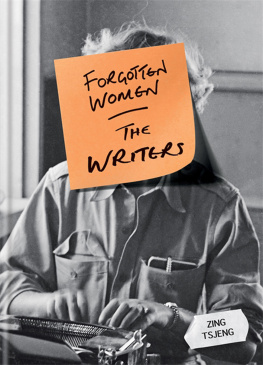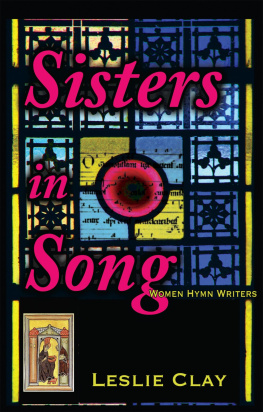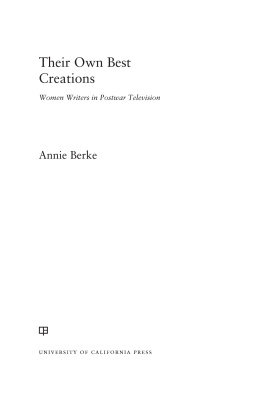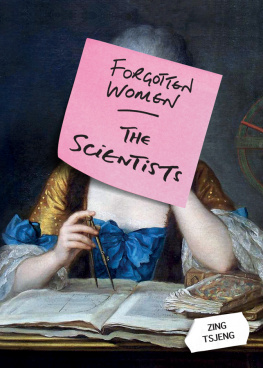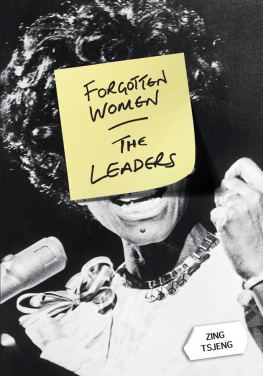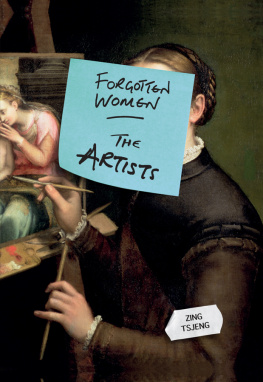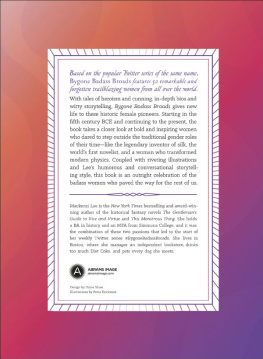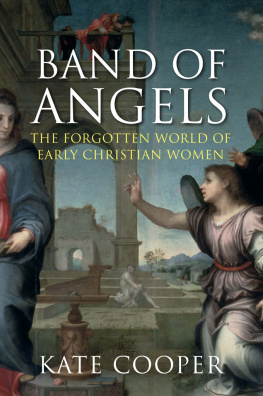Tsjeng - Forgotten Women : The Writers
Here you can read online Tsjeng - Forgotten Women : The Writers full text of the book (entire story) in english for free. Download pdf and epub, get meaning, cover and reviews about this ebook. year: 2018, publisher: Hachette Book Group USA, genre: Non-fiction. Description of the work, (preface) as well as reviews are available. Best literature library LitArk.com created for fans of good reading and offers a wide selection of genres:
Romance novel
Science fiction
Adventure
Detective
Science
History
Home and family
Prose
Art
Politics
Computer
Non-fiction
Religion
Business
Children
Humor
Choose a favorite category and find really read worthwhile books. Enjoy immersion in the world of imagination, feel the emotions of the characters or learn something new for yourself, make an fascinating discovery.
- Book:Forgotten Women : The Writers
- Author:
- Publisher:Hachette Book Group USA
- Genre:
- Year:2018
- Rating:5 / 5
- Favourites:Add to favourites
- Your mark:
- 100
- 1
- 2
- 3
- 4
- 5
Forgotten Women : The Writers: summary, description and annotation
We offer to read an annotation, description, summary or preface (depends on what the author of the book "Forgotten Women : The Writers" wrote himself). If you haven't found the necessary information about the book — write in the comments, we will try to find it.
Tsjeng: author's other books
Who wrote Forgotten Women : The Writers? Find out the surname, the name of the author of the book and a list of all author's works by series.
Forgotten Women : The Writers — read online for free the complete book (whole text) full work
Below is the text of the book, divided by pages. System saving the place of the last page read, allows you to conveniently read the book "Forgotten Women : The Writers" online for free, without having to search again every time where you left off. Put a bookmark, and you can go to the page where you finished reading at any time.
Font size:
Interval:
Bookmark:




 ouve probably heard of Sappho (c. 620c. 570 BC). She gifted the term sapphic to the world, and her island birthplace Lesbos is the origin of the word lesbian. She is probably the most studied poet in this book by a long shot. But what do we actually know about her? Not a lot, as it turns out.
ouve probably heard of Sappho (c. 620c. 570 BC). She gifted the term sapphic to the world, and her island birthplace Lesbos is the origin of the word lesbian. She is probably the most studied poet in this book by a long shot. But what do we actually know about her? Not a lot, as it turns out.
Sappho is thought to have written nine books of lyric poetry so sublime that Solon, an esteemed Athenian lawmaker, desired to learn one by heart because once Ive learned it, I can die. The term lyric also references the lyre that was intended to accompany her heart-rending exaltations of love and longing. Sapphos work was meant to be sung, and she is even thought to have invented a plectrum for plucking the strings of the lyre.
Sometime around the Middle Ages, however, almost all of Sapphos work was lost. Only about 260 fragments have been discovered some consisting of just a few stanzas, and others a few words, mostly copied on shreds of papyrus and parchment. Some were even found buried in an ancient garbage dump in Egypt. So far, only a single complete poem has been found, written in what is now known as sapphic stanza. Its a hymn to Aphrodite, the goddess of love, in which Sappho beseeches her to lend her assistance in a love affair: Come to me now release me from these troubles, everything my heart longs to have fulfilled, fulfill, and you be my ally.

The Suda, a 10th-century Byzantine encyclopedia of Greek and Roman antiquity, says that Sappho flourished sometime between 612 BC and 608 BC, though the information it provides may not be wholly accurate. (It also describes her marriage to a trader called Kerkylas of Andros a name that basically translates as Little Prick from the Isle of Man.) What we do know is that Sappho was enormously fted in her own time; Plato called her The Tenth Muse the nine preceding Sappho, of course, were divine mythological beings, the daughters of gods. She was named The Poetess by her contemporaries (Homer, for the record, was called The Poet).
Though now her name is synonymous with queer desire, women from the island of Lesbos, including Sappho herself, were widely associated during her time with heterosexual promiscuity. (In classical Greek, the word lesbiazein actually refers to giving fellatio.) Still, various texts the Suda among them maintain that Sappho was well known for her shameful friendship
In Sapphos time, poetry was mainly performed for ceremonial or religious purposes. Though scholars now question just how autobiographical some of her work is, Sappho dragged the literary form into the realm of the intensely personal and the erotic. I would rather see her lovely step, Sappho writes of a beautiful maiden named Anaktoria, and the radiant sparkle of her face than all the war chariots in Lydia and soldiers battling in arms. She was also adept at portraying the queasy physicality of desire:
Once again Love, that loosener of limbs,
bittersweet and inescapable, crawling thing,
seizes me.
As the centuries passed, squeamish historians found ways to explain away Sapphos apparent love of women. In the 19th century, the fad was to pass her off as the head of a girls school; her adoration of pupils was therefore chaste and purely academic. Another explanation held that she was a priestess to a goddess, and hence her interest in women was purely divine. (Of course, none of these theories accounts for the fact that Sappho could be a teacher or a religious practitioner and fancy women at the same time.) Others simply sought to eradicate the question from the face of the earth, like Pope Gregory VII, who some believe ordered the burning of Sapphos manuscripts.
In 2014, a new fragment of papyrus, now called The Brothers Poem, came to light. Ten years earlier, three fragments had been discovered, making up an almost complete poem known as The Tithonus Poem. Still, so much has been lost these are mere shreds of Sapphos entire body of work, and everything else must lie in wait of discovery. No wonder classicists often direct people to the entry on Sappho in Monique Wittig and Sande Zeigs book Lesbian Peoples: Material for a Dictionary a single blank page. Like the objects of her affection, Sappho remains tantalizingly out of reach.
 f you ever visit visit the Mesopotamia storage vault of Penn Museum in Philadelphia, you might encounter a ceremonial stone disc about the size of a large wheel of cheese. It bears a dedication on its back to the Sumerian moon god Nanna from the high priestess of the ancient city of Ur. The front of the carving bears her likeness, with a figure in tiered robes and ornate braids. Meet Enheduanna (c. 2285 c. 2250 BC), the woman who is historys first-ever identifiable author.
f you ever visit visit the Mesopotamia storage vault of Penn Museum in Philadelphia, you might encounter a ceremonial stone disc about the size of a large wheel of cheese. It bears a dedication on its back to the Sumerian moon god Nanna from the high priestess of the ancient city of Ur. The front of the carving bears her likeness, with a figure in tiered robes and ornate braids. Meet Enheduanna (c. 2285 c. 2250 BC), the woman who is historys first-ever identifiable author.
Enheduanna composed a total of around 42 works, and archaeologists have found records that point to evidence that her poetry survived for centuries clay tablets of her work were still being created 500 years after her time, suggesting that she was remembered long after her death. Her hymns are the first record of a new and distinct method of worship one with a personal, revelatory and even sensual relationship with the divine and her fingerprints can be seen farther along the centuries in the Homeric Hymns of Ancient Greece and the Hebrew Bible.
Enheduanna was already using reeds to carve her words into wet clay tablets only about three hundred years after cuneiform script was even invented. When the crumbled, these objects vanished in the deserts of present-day southern Iraq until their excavation in the early part of the 20th century. And what glorious poetry they revealed, with lines that transformed sex into jaw-droppingly explicit ritual worship:
My vulva field is open
this maid asks who will plow it.
Vulva moist in the floodlands
the queen asks who brings the ox
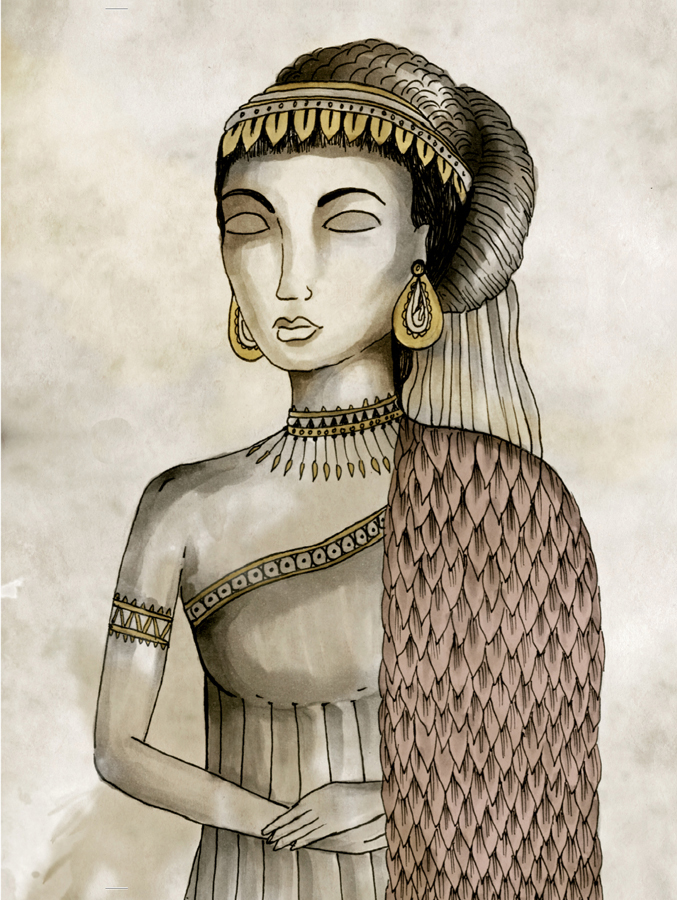
were performed by priestesses like Enheduanna as part of rituals that promised fertility and new life to the kingdom.
Her practical function, however, was to unite all the disparate and quarrelsome cities under the banner of religion a job that involved ruling over an administration of temple officials, overseeing the temple estate and performing all the complex daily rituals that guaranteed the kingdom prosperity and good harvest. Enheduanna must have excelled in all three over the next half a millennium, Sargons descendants made sure that princesses like Enheduanna continued to occupy the important position.
Font size:
Interval:
Bookmark:
Similar books «Forgotten Women : The Writers»
Look at similar books to Forgotten Women : The Writers. We have selected literature similar in name and meaning in the hope of providing readers with more options to find new, interesting, not yet read works.
Discussion, reviews of the book Forgotten Women : The Writers and just readers' own opinions. Leave your comments, write what you think about the work, its meaning or the main characters. Specify what exactly you liked and what you didn't like, and why you think so.

